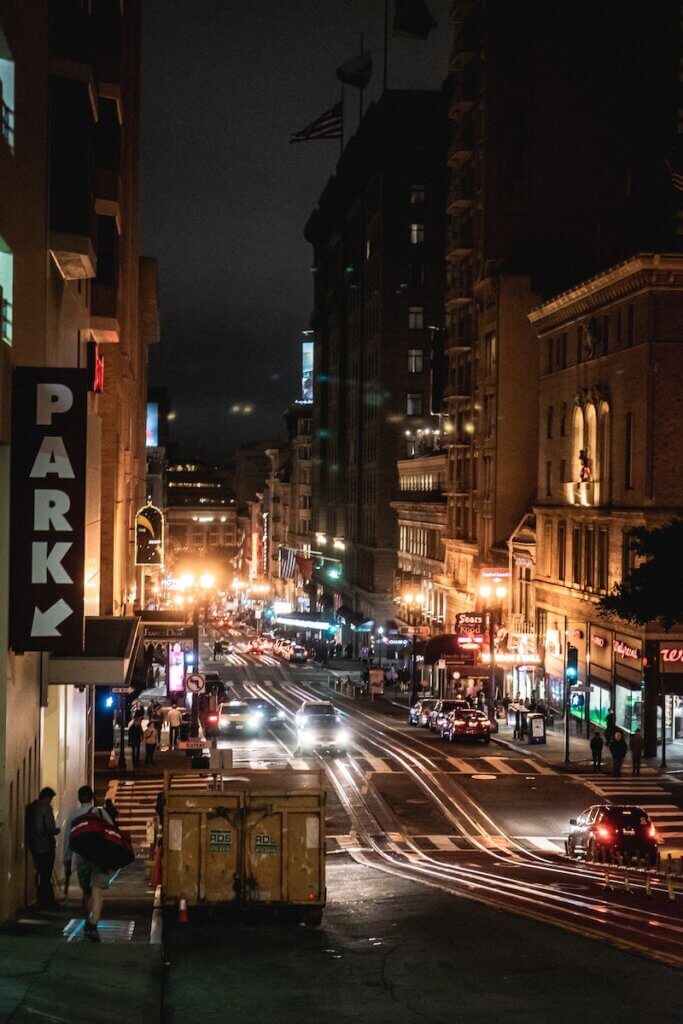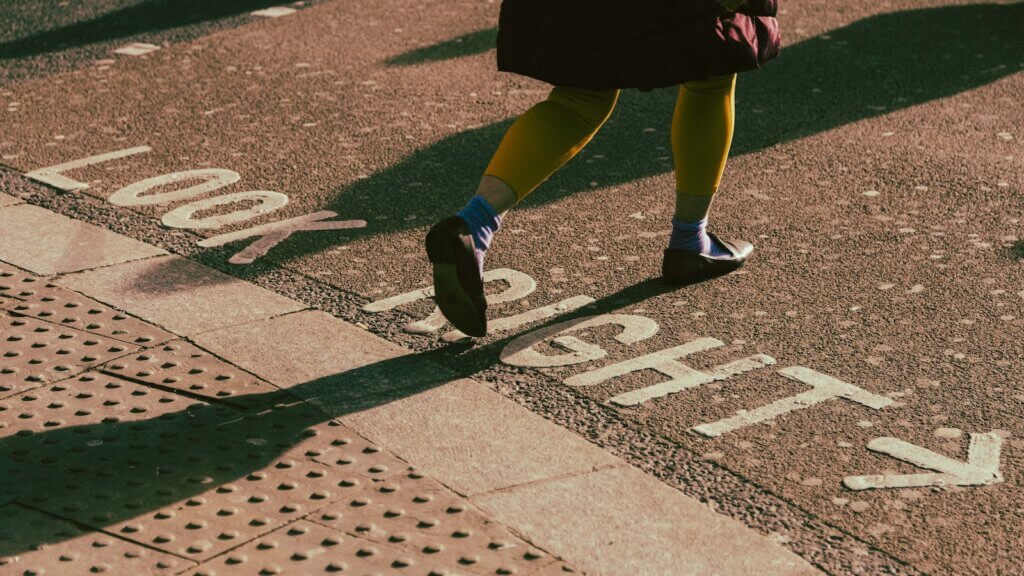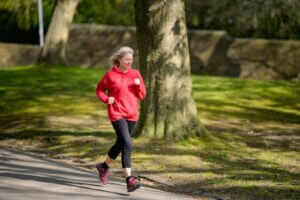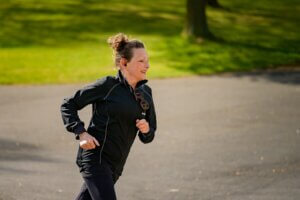Welcome to the bustling streets of the city, where concrete meets ambition, and runners take on a unique urban challenge. If you’ve ever wondered how to navigate the vibrant cityscape while maintaining your running routine, you’ve come to the right place. Running in the city offers a dynamic and invigorating experience, but it also presents its own set of considerations and opportunities.
In this blog post, we’ve compiled ten essential tips for urban joggers like yourself. Whether you’re a seasoned pavement pounder or new to the city running scene, these insights will help you make the most of your urban adventures. So lace up your running shoes, tune in to the rhythmic heartbeat of the city, and let’s dive into our list of tips for running in the city:
- Embrace the urban landscape
- Plan your routes strategically
- Be mindful of traffic and pedestrians
- Discover hidden running trails
- Stay safe and visible
- Embrace early mornings or late evenings
- Explore city parks and green spaces
- Hydrate effectively on the go
- Incorporate interval training
- Join a local running community
Ready to conquer the city streets and elevate your running game? Let’s dive into each tip in detail and unlock the secrets to an exceptional running experience amidst the vibrant energy of the urban environment.
Table of Contents
1. Embrace the Urban Landscape

When running in the city, one of the most exciting aspects is embracing the urban landscape. Instead of seeing buildings and bustling streets as obstacles, view them as a source of inspiration and motivation. Let the city become your running companion!
To fully embrace the urban landscape, consider incorporating these practical tips:
- Utilize city landmarks for motivation: Choose a route that takes you past iconic landmarks like a historic building, a vibrant street mural, or a scenic bridge. These visual cues can provide a sense of progress and keep you motivated throughout your run.
- Enjoy the dynamic environment as a backdrop: Running in the city offers a unique blend of sights and sounds. Take in the energy of the bustling streets, the rhythm of footsteps around you, and the ever-changing urban scenery. It’s like having a front-row seat to the city’s heartbeat.
For example, imagine running along the waterfront, feeling the cool breeze from the nearby river, witnessing the sunrise painting the sky with vibrant hues. The dynamic cityscape becomes the backdrop to your invigorating run.
By embracing the urban landscape, you turn every run into an opportunity for exploration and inspiration.
2. Plan your routes strategically
When it comes to running in the city, strategic route planning is key to a successful and enjoyable experience. Consider these practical tips to ensure you make the most out of your urban runs:
- Research Safe and Scenic Routes: Before hitting the pavement, take some time to research routes that offer a balance of safety and scenic views. Look for dedicated running paths, parks, or quieter residential areas with less traffic. Online running communities or mobile apps can provide insights and recommendations from local runners.
- Consider Factors: Keep in mind the factors that can impact your route choice. Are you looking for a flat route for speed training or a hilly course for a challenging workout? Think about the distance you want to cover and how it aligns with your fitness goals. Consider the availability of water fountains or restrooms along the route, especially on longer runs.
- Map it Out: Once you have a general idea of where you want to run, use online mapping tools or running apps to map out your route. Pay attention to intersections, traffic lights, and pedestrian crossings to ensure a smooth and safe journey. Having a visual representation of your route can help you stay on track and avoid unnecessary detours.
- Test and Modify: Don’t be afraid to test different routes and modify them based on your preferences and experiences. Keep a record of your favorite routes and note any areas that may require adjustments. Exploring new routes will keep your runs interesting and prevent monotony.
By strategically planning your routes, you can optimize your city running experience, enjoy diverse scenery, and ensure a safe and efficient workout.
3. Be mindful of traffic and pedestrians

Running in the city means sharing the roads and sidewalks with vehicles and pedestrians. Here are some essential tips to stay safe and courteous during your urban runs:
- Follow Traffic Rules: Treat your run like you would any other outdoor activity. Observe traffic signals, cross at designated crosswalks, and obey traffic laws. Just like drivers, be aware of your surroundings and use hand signals when turning or changing lanes.
- Stay Alert: Pay attention to your surroundings and stay vigilant. Avoid distractions like wearing headphones at high volumes, as they can impede your ability to hear approaching vehicles or warnings from other pedestrians. Keep your eyes on the road, scanning for any potential hazards.
- Yield to Pedestrians: Respect other walkers, joggers, and pedestrians sharing the sidewalks or running paths. Slow down or move to the side when passing someone, providing them with ample space. If you encounter a crowded area, consider adjusting your pace to maintain a safe distance.
- Use Reflective Gear: When running in low-light conditions or at night, wear reflective clothing or accessories. This helps drivers and other pedestrians see you more easily, reducing the risk of accidents. A reflective vest, armband, or even a headlamp can significantly enhance your visibility.
- Be Courteous: Foster a positive atmosphere by being polite and considerate to those around you. Offer a smile or a friendly nod to fellow runners or pedestrians you encounter. Share the sidewalk or path by giving way to others when necessary, creating a harmonious environment for everyone.
Remember, when it comes to running in the city, safety and respect go hand in hand. By being mindful of traffic and pedestrians, you can enjoy your run while promoting a sense of unity within the urban running community. Stay aware, be considerate, and make your city runs a safe and enjoyable experience.
Read: Running with pepper spray
4. Discover hidden running trails
Running in the city doesn’t mean you’re limited to crowded streets and busy sidewalks. There are often hidden gems in urban areas that offer peaceful and scenic running trails. Here’s how you can uncover these hidden treasures:
- Explore Local Parks: City parks are a great place to start your search for hidden running trails. Many parks have designated paths or trails specifically designed for runners. These trails often wind through green spaces, offering a serene escape from the bustling city.
- Check Out Riverfronts or Waterfronts: If you live near a river or coastline, chances are there are running trails along the waterfront. These paths can provide breathtaking views and a refreshing breeze as you run. Plus, running near water can have a calming effect, making your workout even more enjoyable.
- Seek Out Urban Forests or Nature Reserves: Some cities have pockets of greenery in the form of urban forests or nature reserves. These areas are perfect for runners who want to immerse themselves in nature without leaving the city limits. Look for local nature preserves or conservation areas where you can find hidden trails waiting to be explored.
- Join Running Communities: Connect with local running communities or groups familiar with your city’s best-hidden trails. They can provide valuable recommendations and insider knowledge about lesser-known running routes. Online forums or social media groups dedicated to running can be excellent resources for finding these communities.
By venturing beyond the typical city streets, you can uncover hidden running trails that offer tranquility and natural beauty. These trails provide a refreshing change of scenery and can turn your urban run into a mini-adventure.
5. Stay safe and visible
When running in the city, ensuring your safety and visibility is crucial. Here are some practical tips to help you stay safe and visible during your urban runs:
- Wear Bright Colors: Opt for bright and easily visible clothing to stand out amidst the urban backdrop. Fluorescent or neon colors are great choices, as they catch the attention of motorists and pedestrians.
- Use Reflective Gear: Add reflective elements to your running attire, such as reflective strips or vests. These shine brightly when illuminated by headlights, making you more visible, especially in low-light conditions.
- Choose Well-Lit Routes: Whenever possible, plan your routes along well-lit streets or running paths. Adequate lighting reduces the risk of tripping hazards and enhances your visibility to others.
- Run-Facing Traffic: When running on roads without sidewalks, always run against the flow of traffic. This way, you can see oncoming vehicles and react accordingly.
- Carry Identification: It’s essential to have some form of identification with you, such as an ID card, a running tag with emergency contact information, or using a running app that allows sharing your location with trusted contacts.
By taking these simple steps, you prioritize your safety and ensure that others can easily see you while running in the city. Remember, being visible means being safer, so make it a habit to dress brightly and stay aware of your surroundings.
6. Embrace early mornings or late evenings
Finding the right time to go for a run in the city can make a world of difference. Consider these reasons why embracing early mornings or late evenings can enhance your urban running experience:
- Cooler Temperatures: Running in the city during the early mornings or late evenings often means avoiding the scorching heat of the midday sun. Cooler temperatures can make your run more comfortable and reduce the risk of overheating.
- Reduced Traffic: These off-peak hours typically see less traffic on the roads and fewer pedestrians on the sidewalks. With fewer distractions and obstacles, you can focus more on your run and enjoy smoother, uninterrupted routes.
- Calm Atmosphere: There’s a certain tranquility to be found during the early mornings or late evenings in the city. The hustle and bustle of rush hour subside, creating a peaceful environment where you can connect with the city’s energy on a more intimate level.
- Sunrise or Sunset Views: Witnessing a stunning sunrise or sunset while running can be a truly awe-inspiring experience. The city skyline bathed in golden hues or the vibrant colors painted across the sky can add an extra layer of beauty to your workout.
By embracing early mornings or late evenings for your city runs, you can enjoy cooler temperatures, quieter streets, and captivating views. So set your alarm clock a bit earlier or lace up your shoes for a sunset jog, and let the magic of the city embrace you during these serene hours.
7. Explore city parks and green spaces

When running in the city, don’t forget to tap into the natural oasis that urban parks and green spaces provide. Here’s why you should make them a part of your running routine:
- Scenic Escape: City parks offer a refreshing change of scenery from the bustling streets. Picture lush greenery, blooming flowers, and serene lakes or ponds. Running through these natural environments can help reduce stress, enhance your mood, and add a sense of tranquility to your workouts.
- Varied Terrain: Parks often feature diverse terrain, including hills, trails, and open fields. This variety can challenge your muscles in different ways, providing a more well-rounded workout. It’s like having a mini adventure within the city.
- Cleaner Air: Green spaces tend to have cleaner air quality compared to busy roads. The abundance of trees and plants helps filter pollutants and provides a fresher breathing environment. Take advantage of this natural filtration system for a healthier run.
- Community Connections: City parks are popular gathering spots for fitness enthusiasts, joggers, and recreational athletes. You might find running groups, yoga classes, or outdoor fitness events taking place. Engaging with these communities can offer motivation, support, and the opportunity to connect with like-minded individuals.
Next time you plan your city run, explore the nearby parks or green spaces. Immerse yourself in nature, challenge your body with varied terrain, breathe in cleaner air, and potentially find a new community of running enthusiasts. City parks are waiting to be discovered, so lace up your shoes and let the natural beauty of these green havens energize your urban running experience.
8. Hydrate effectively on the go
Staying properly hydrated during your city runs is crucial for maintaining energy and preventing dehydration. Here are some practical tips to ensure you hydrate effectively on the go:
- Carry Water: Invest in a handheld water bottle, hydration belt, or a running backpack with a hydration bladder. These options allow you to carry water conveniently while keeping your hands free. Choose a bottle or bladder with a secure closure to prevent leaks.
- Plan Water Stops: Identify water fountains, parks with water facilities, or convenience stores along your running route. Plan your route accordingly, so you can refill your water bottle when needed. If you’re unsure about the availability of water sources, consider carrying some cash for emergency purchases.
- Hydration Pack: For longer runs or hot weather, consider using a hydration pack with a larger water capacity. These packs typically have a built-in water reservoir and a tube for easy sipping while running. It’s a hands-free option that ensures a steady supply of water throughout your run.
- Electrolyte Balance: When running for extended periods or in high temperatures, it’s essential to replace electrolytes lost through sweat. Consider carrying electrolyte-enhanced sports drinks or tablets to replenish sodium, potassium, and other essential electrolytes.
Remember, staying hydrated is an ongoing process during your run. Take small sips at regular intervals, rather than chugging large amounts all at once. Listen to your body’s thirst cues and adjust your hydration strategy accordingly. With the right preparation and hydration plan, you can keep yourself refreshed and performing at your best during your city runs.
Related: Do I Need To Fuel During A Half Marathon?
9. Incorporate interval training
Interval training is a powerful tool that can supercharge your city runs, helping you improve speed, endurance, and overall fitness. Here’s how you can incorporate intervals into your urban workouts:
- Pick Your Markers: Choose landmarks in the city as your interval markers. It could be lamp posts, crosswalks, or park benches. These markers will serve as your points of reference for speed changes during your run.
- Vary Your Pace: Alternate between periods of higher intensity and recovery. For example, sprint from one marker to the next, pushing yourself to your maximum effort. Then, recover by jogging or walking until you reach the next marker.
- Customize Your Intervals: Tailor your intervals to your fitness level and goals. Start with shorter bursts of high intensity, like 30 seconds of sprinting, followed by 1-2 minutes of recovery. As you progress, increase the duration of the intense effort or decrease the recovery time.
- Track Your Progress: Keep a record of your interval workouts to monitor your progress over time. Note the distances covered, times, and any improvements you notice. This tracking will help you gauge your fitness gains and motivate you to push further.
By incorporating interval training into your city runs, you’ll enhance your cardiovascular fitness, build endurance, and boost your speed. So, challenge yourself, embrace the urban landscape, and let the intervals take your city running experience to the next level.
10. Join a local running community
Running is not just an individual sport; it can also be a fantastic opportunity to connect with like-minded individuals in your city. Here’s why you should consider joining a local running community:
- Motivation and Support: Being part of a running community provides you with a support system and motivation to stay committed to your fitness goals. You’ll find encouragement from fellow runners who understand the challenges and triumphs of running in the city.
- Group Runs: Many running communities organize regular group runs, which offer a fantastic chance to explore new routes, discover hidden gems, and make new friends. Group runs often cater to different fitness levels, so there’s something for everyone.
- Training Programs: Some running communities offer structured training programs, especially for races or specific distances. These programs can help you improve your running technique, build endurance, and reach new milestones.
- Social Connections: Running communities often organize social events, races, and gatherings, allowing you to connect with fellow runners beyond the pavement. You’ll find a sense of camaraderie and shared experiences that can enhance your overall running journey.
- Knowledge Sharing: Local running communities are a treasure trove of knowledge. Members can share tips on routes, gear, nutrition, and race strategies. Whether you’re a beginner seeking guidance or a seasoned runner looking for new insights, the collective wisdom of a running community is invaluable.
By joining a local running community, you can elevate your running experience, find support, make friends, and tap into a wealth of resources. Check out social media groups, community centers, or local running stores to find the running community that suits you best.
What to wear when running in the city?
When it comes to what to wear while running in the city, comfort, safety, and visibility should be your top priorities. Here’s a no-nonsense guide to help you dress for success:
- Choose moisture-wicking fabrics: Opt for lightweight, breathable materials that draw sweat away from your body, keeping you cool and dry.
- Wear reflective gear: Invest in clothing or accessories with reflective elements, such as jackets, vests, or armbands. These will make you more visible to motorists and pedestrians, especially during low-light conditions.
- Don’t forget the footwear: Pick running shoes that provide proper cushioning and support for your feet. Look for models designed for urban terrain and consider adding reflective shoelaces for an extra visibility boost.
- Layer up appropriately: Dress in layers that you can easily remove or add as needed. This allows you to adapt to changing weather conditions during your run.
Remember, the right gear can enhance your comfort, safety, and confidence while running in the city, so choose wisely!
Where to run?
- Sidewalks: Hit the city sidewalks for a convenient and easily accessible running route. With well-paved surfaces, you can maintain a steady pace without worrying about uneven terrain.
- Parks: Urban parks offer a refreshing escape from the city’s hustle and bustle. Central Park in New York City spans over 840 acres, providing ample space for runners to explore nature in the heart of the metropolis.
- Riverfronts: Many cities boast picturesque riverfronts that make for excellent running paths. For instance, Chicago’s Lakefront Trail stretches 18 miles along Lake Michigan, offering breathtaking views and a serene atmosphere.
- Stadiums and Tracks: If you prefer a controlled environment, seek out local stadiums or tracks. These facilities often provide well-maintained surfaces for focused workouts and interval training.
Remember, finding the right running location in the city is essential for an enjoyable and effective workout.
When to run?
The best times to hit the city streets for your run are early mornings or late evenings.
Why? Well, during these times, the traffic is lighter, and the sidewalks are less crowded. Plus, the temperatures are cooler, making your run more comfortable. Did you know that a study found that air pollution levels are also lower during these times?
So, if you want to breathe in cleaner air while enjoying your run, those early mornings and late evenings are the way to go. Imagine the serenity of a sunrise run or the enchantment of a moonlit jog.
So, set your alarm clock or slip on your running shoes after work, and take advantage of the quieter, cooler, and cleaner city running experience.
Mistakes to Avoid While Running in the City

1. Running Against Traffic
One common mistake is running against the traffic flow. It’s crucial to run facing the oncoming vehicles to ensure better visibility and react quickly if needed. Running in traffic puts you at a higher risk of accidents.
2. Ignoring Pedestrian Etiquette
Remember, you’re sharing the sidewalks with pedestrians. Avoid darting in and out between people, causing disruptions, or running too close to them. Respect their space and be mindful of your surroundings.
3. Skipping Warm-up and Stretching
Neglecting warm-up exercises and stretches can lead to injuries. Take a few minutes to loosen up your muscles with dynamic stretches like leg swings or arm circles before starting your run.
4. Not Carrying Identification
Accidents can happen anywhere, so it’s important to carry identification with you. In case of an emergency, it helps first responders quickly contact your loved ones and provide the necessary information.
5. Failing to Stay Hydrated
Hydration is vital during runs, especially in urban environments where you may be exposed to more heat and pollution. Carry a water bottle or plan your route near water fountains or stores to replenish fluids.
6. Ignoring Safety Gear
Wearing proper safety gear is essential for visibility, particularly when running in low-light conditions. Invest in reflective clothing, LED armbands, or headlamps to make sure you’re visible to drivers and other pedestrians.
By avoiding these common mistakes, you’ll enhance your safety, maximize your enjoyment, and make the most out of your urban running experience. Stay vigilant, respect others, and keep striving for your fitness goals as you explore the vibrant cityscape.
Final Thoughts: How to Run in the City?
As we reach the end of this urban running adventure, I want to take a moment to reflect on the incredible journey we’ve embarked on together. Running in the city is not just about lacing up our shoes and hitting the pavement; it’s a mindset, a way of embracing the vibrancy and rhythm that only the city can offer.
Through these ten essential tips, we’ve uncovered the secrets to making the most of our urban runs. From navigating traffic to discovering hidden trails, we’ve learned how to thrive in the midst of the bustling energy. But it’s not just about the physical aspect; it’s about finding our stride amidst the chaos, carving out our own paths in the concrete jungle.
So, fellow urban runner, I urge you to step out with confidence, explore new routes, and let the city inspire you. Embrace the early mornings and late evenings, feel the pulse of the city beneath your feet, and remember that running in the city is a unique opportunity to connect with both ourselves and the world around us.
As you continue your urban running journey, remember that the city is yours to conquer. Stay safe, stay motivated, and keep pushing your limits. Let the city be your playground, your source of strength, and your constant companion on this exhilarating running adventure.
Now, go out there and seize the streets. Happy running!
FAQ
How do you run in an urban area?
When running in an urban area, it’s important to plan your routes carefully. Look for designated running paths, parks, or quieter residential streets. Be aware of your surroundings, follow traffic rules, and stay alert for pedestrians and vehicles. Consider running during less busy times of the day, such as early mornings or late evenings, to avoid heavy traffic.
Is it better to jog on the street or the sidewalk?
Generally, it’s safer to jog on the sidewalk whenever possible. Sidewalks provide separation from traffic, reducing the risk of accidents. If a sidewalk isn’t available, run on the side of the road facing oncoming traffic. Stay as far to the side as possible and be vigilant. Remember, the safety of yourself and others should always be a priority.
Is it okay to run on the street?
Running on the street should be a last resort if no other options are available. If you find yourself running on the street, ensure that you face oncoming traffic, stay as close to the curb as possible, and remain alert to approaching vehicles. However, it’s generally recommended to prioritize running on sidewalks or designated running paths for your safety.


